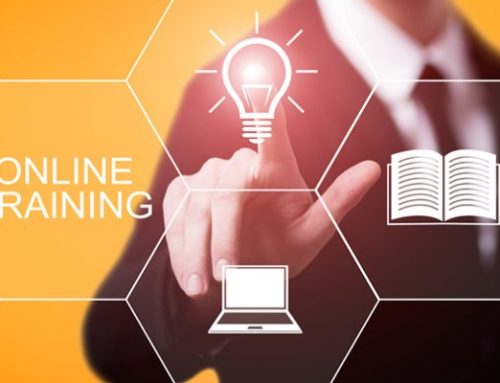Blended learning can be implemented across different types of training situations. It’s not about which is more important; eLearning or instructor-led training, It is about finding the balance that works for the learner and delivers results for your organization! Here are just a few examples of how blended learning can work for your most common training needs.
Process
This type of training really lends itself to more of an eLearning approach. Partner with eLearning course designers who have the ability to design the process as life-like as necessary at any step; from simple need- to- know information to more decision based simulations. They should also excel at including alternatives/options based on variables. The eLearning course will serve as both initial instruction and just-in-time refresher, to revisit as necessary before actually operating or applying the process.
Instructor led sessions (whether classroom or distance learning) can be used at strategic intervals to accomplish a variety of follow-up activities: Q&A, New Applications for the Process, Process Improvement, or Case Studies.
Compliance
Partner with eLearning course designers who have the ability to add engagement and interactivity to typically text-heavy content. It helps to achieve results if the learner not only learns to comply but is also interested!
The course can be supported by sessions with SMEs and peers to encourage better understanding/application. Learners can also form into cohorts; meeting-up online to discuss problems or doubts and find the answers among themselves. Both the SME and cohorts sessions can be monitored and tracked by facilitators. These last two suggestions might be dictated by how important demonstrating compliance is to your organization.
Building or Refreshing Skills
Partner with an eLearning course designer who can build a foundation with small capsule sessions presented in a format that allows quick reading with simple language and a bulleted format. There are many advantages to this approach:
- A short encapsulated version provides refreshers that can be achieved with a quick look.
- Mobile versions allow access anytime, anywhere; including just before an important presentation!
- Application can be built into the eLearning through simulations or addressed through a distance learning/ classroom application session (annual meetings work well for this).
Product or Technical Knowledge
Partner with an eLearning course designer who can outline the implications of new or changing product or software information, keeping length short, to ensure that learner gets used to the basics of the new information. Present background on development or previous versions in an optional view, to keep seat time to a minimum.
Keep the demonstration/ workings reserved for the instructor-led/distance learning session (especially helpful for technical training). Since the eLearning creates a level-set across learners, these application sessions will go more smoothly and are more engaging for everyone. If Instructor time is an issue, skillful design partners can build these application sessions into the eLearning. This approach works well for busy professionals used to the idea of self-paced learning. An online course gives them the liberty of reading up on the basics per their convenience. Taking time out for a scheduled instructor-led session then seems much easier!
—
In each of these examples, testing or knowledge checks can also be added to the eLearning and tracked. You can also use your LMS to create schedules for these courses and provide timelines that guide the learners on how to proceed through the course.The LMS also has a tracking mechanism that can insure all employees are going through the course in the the required time-lines.
Want to know more about crafting a blended learning approach that’s right for your organization? We’re happy to “Illlumen” ate you further! Or join us for our next webinar at illumengroup.com/webinars.






